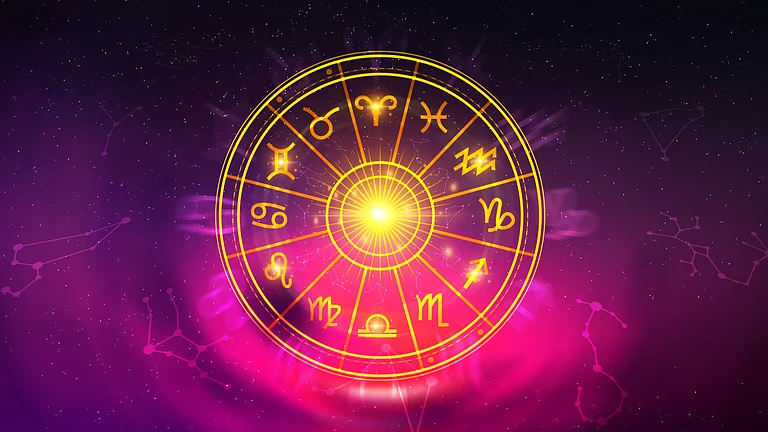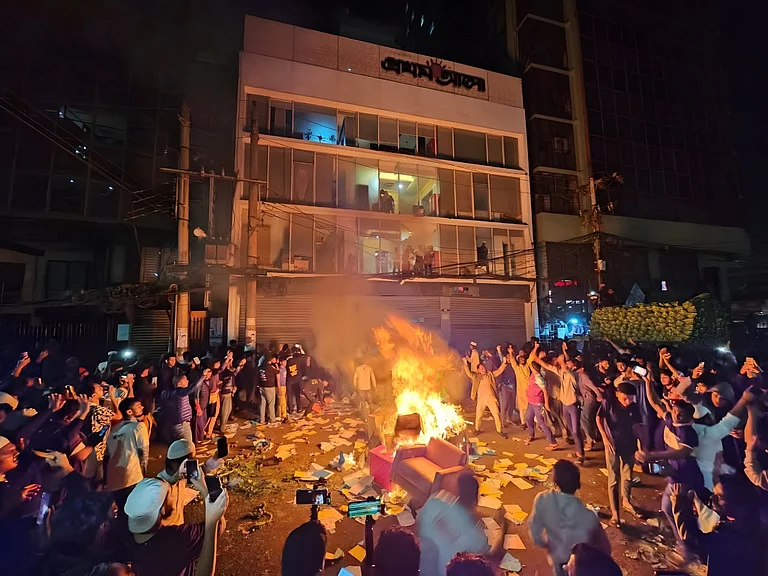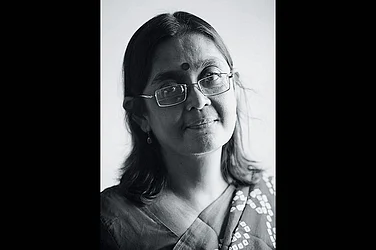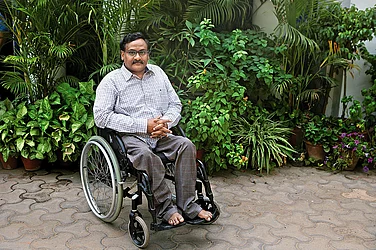History is a complicated matter in today’s India. One would think a subject as objective as history wouldn’t be a matter of debate. We all know the basics of colonialism, the timeline of our country’s Independence, the role of Mahatma Gandhi―these are objective facts and not a subject of debate. Or one would think. It seems like the turn of the last millennium has brought forth a new subject altogether―altered history. It looks like historical facts are no longer facts; they are carefully manoeuvred missiles to be deployed according to the attacker’s convenience. Historiography is now subject to “interpretation” and the study of certain parts of history is considered inflammatory. It’s like we have assumed the collective consciousness of Indians―which is so malleable―that studying history in its true form will make the masses uncontrollable. It is funny that the people who are now asking for a rewrite of our history textbooks are the very ones who read these history books approved by historians like Romila Thapar and yet choose to distort the facts they learned.
While the discussion of whose history is correct and whose is distorted will take another millennium to discuss and decipher, we can’t deny the fact that popular culture has played a big role in portraying the “actual” events of history. As a kid, I still remember watching the Shah Rukh Khan-starrer, Asoka in the theatre and returning with the thought that it was pure entertainment and nothing else. The masses too seem to have thought so―because the movie is seldom referenced as a historic relic while talking about Asoka. However, things seem to have changed now in our erudite nation. Today, there is a need to prove that one’s history is superior to others. It’s like the subject needs to be saved from invaders. It’s like we have collectively decided to love our version of history like it’s an ornament handed down to us for generations. We hold onto this version of history, guard it with our lives, and refuse to believe another version that doesn’t match our own. History is now no longer a subject of study―it’s a matter of debate. A subject that’s malleable enough to be interpreted differently by anyone reading it.
I am a student of history, with two history degrees. I know someone reading this might be wondering if these degrees played any role in my career. After all, a history degree isn’t one that pays―it’s a life choice that dooms us to dusty archives where our head lays buried among books and documents and we choose what story to tell our readers depending on our political inclinations. Which is why I am now surprised that this profession is now a profitable one―if I choose to change it to suit the narrative of films. While creative liberties are a birthright of a filmmaker, I disagree with the distortion of facts in today’s films. I don’t have the creative or physical energy to fight with people who believe that Ram Setu was constructed by Lord Ram or that the ancient city of Dwarka is underwater, just like Atlantis.
Since 2014, the trajectory of historical films has shifted. From grandiose showcases to awe people, we have now reached a stage where films are being used to “teach” people history that has been ignored by historians. It’s like we have chanced upon a new history that has to be told to people, otherwise they will lose sight of the common goal. Sanjay Leela Bhansali, the torchbearer of historical films, took us down a dark path when he made Padmaavat―a film on the fictional story of Rani Padmaavati, who the Muslim king Allauddin Khilji wanted for her beauty. The film took several creative liberties in its interpretation of Khilji and set the precedent for any filmmaker to wrap their version of history into the garb of filmmaking. While the film’s actress was a subject of public sympathy for the harassment she faced for playing the role of a Hindu queen, the fact that the film portrayed a part of history that probably doesn’t exist makes it a problematic part of all that happened later on. Padmaavat (known as Padmaavati before the Rajputs forced the filmmaker to change the name of the film) is just the tip of the iceberg.
While Padmaavat relied on grandiose sets and costumes to tell a fictional story, films that followed Padmaavat use a strategy that’s obvious to historians, but probably not so obvious to the masses. Several films in the past decade have used the “he said she said” methodology to leave audiences with an understanding of “both” sides of history. Now which side you choose is your own choice. A great example of this method was Ram Setu (2022). In this film, Akshay Kumar plays a righteous Archaeological Survey of India (ASI) archaeologist, who only believes in scientific facts. He is hired by a private company to investigate if the Adam’s Bridge (popularly known as Ram Setu), a limestone trail connecting India and Sri Lanka, is a man-made bridge or a natural bridge. In the Indian epic, The Ramayana, it is said that the Ram Setu was built by an army of monkeys, led by Lord Hanuman on behalf of Lord Ram whose army was marching towards Lanka to rescue his wife Sita, held captive by Ravana. Kumar acts as a righteous scientist at the beginning of the film, claiming that the Ram Setu is a natural occurring edifice and nothing else. Through a series of twists and turns, he comes to believe that the Ram Setu was built by Ram and then he goes on a journey through Sri Lanka to prove the existence of Ravana―hence proving that if Ravana exists, so does Ram. The makers of such films claim allegiance to facts and history, but given the changing nature of history in today’s India, we no longer know what’s true and what isn’t.
Another alarming trend is the attempt to bring forth “uncovered” parts of history. While this attempt is exposing the failure of the liberal movement to course correct, it is also setting a dangerous precedent ahead of the elections. This year has particularly seen the release of several films that either parade the government’s agenda or glorify right-wing nationalistic leaders, while blurring the lines of history along the way. Sayandeb Chowdhury, a professor of literature at Krea University near Chennai, told The Guardian that cinema has become a “form of political mobilisation”. A film that showcased hypocrisy on both sides of the spectrum was Swatantra Veer Savarkar, a film on Vinayak Damodar Savarkar, a divisive Hindu nationalistic leader who fought against British Rule. The film focused on parts of Indian history that have been whitewashed or erased, while still pandering to the larger narrative of Hindu nationalism. The film touched upon critical points in Indian history, such as Bhagat Singh’s admiration of Savarkar. This part of history is not seen favourably by the Left, but it’s undeniable that Bhagat Singh was fond of Savarkar. Swatantra Veer Savarkar also makes an outlandish claim that India would have become free from British rule three decades earlier, if not for Mahatma Gandhi. As a viewer and a student of history, I would care to not make such an outlandish claim, unless I was there at the scene myself. And I’m guessing none of us were, including the director of the film. Films like these also point towards a scary future for India―one where the country’s founding leaders are seen as villains and those typically ‘marginalised’ in the books of history are seen as the real heroes. It also plays into the wider attempt of the right-wing to discard eminent historians of the country such as Thapar and Irfan Habib.
The Kashmir Files (2022) is another film that focuses on an underreported part of history. The film showcased the exodus of Kashmiri Hindus from Kashmir in the 90s―an important part of the state’s history. But it raised several questions about whether Kashmiri Hindus were being used as a political tool to glorify the larger issue of Hindu nationalism. The Kashmir Files also used the “he said, she said” methodology to showcase “both” sides of the argument. Unfortunately, in this film, we weren’t discussing naturally-occurring limestone, but actual people’s lives. The Kashmir Files kept oscillating over the fact whether the disappearance of Kashmiri Hindus from the Valley was a benign exodus or a genocide. While some of the instances of violence showcased in the film were true, the fact that the film was heavily promoted in political circles and even endorsed by Prime Minister Narendra Modi points towards a sinister goal of the film―to rally people towards the goal of Hindu nationalism.
It seems like people have forgotten the larger goal of history books and prefer to use the channel of films to gain their knowledge of the subject. But we must remember that films are just a visual medium. If they become a source of knowledge, then there’s little difference between today’s India and Hitler’s Germany.
Ankita M Kumar is a US-based journalist and lecturer



























